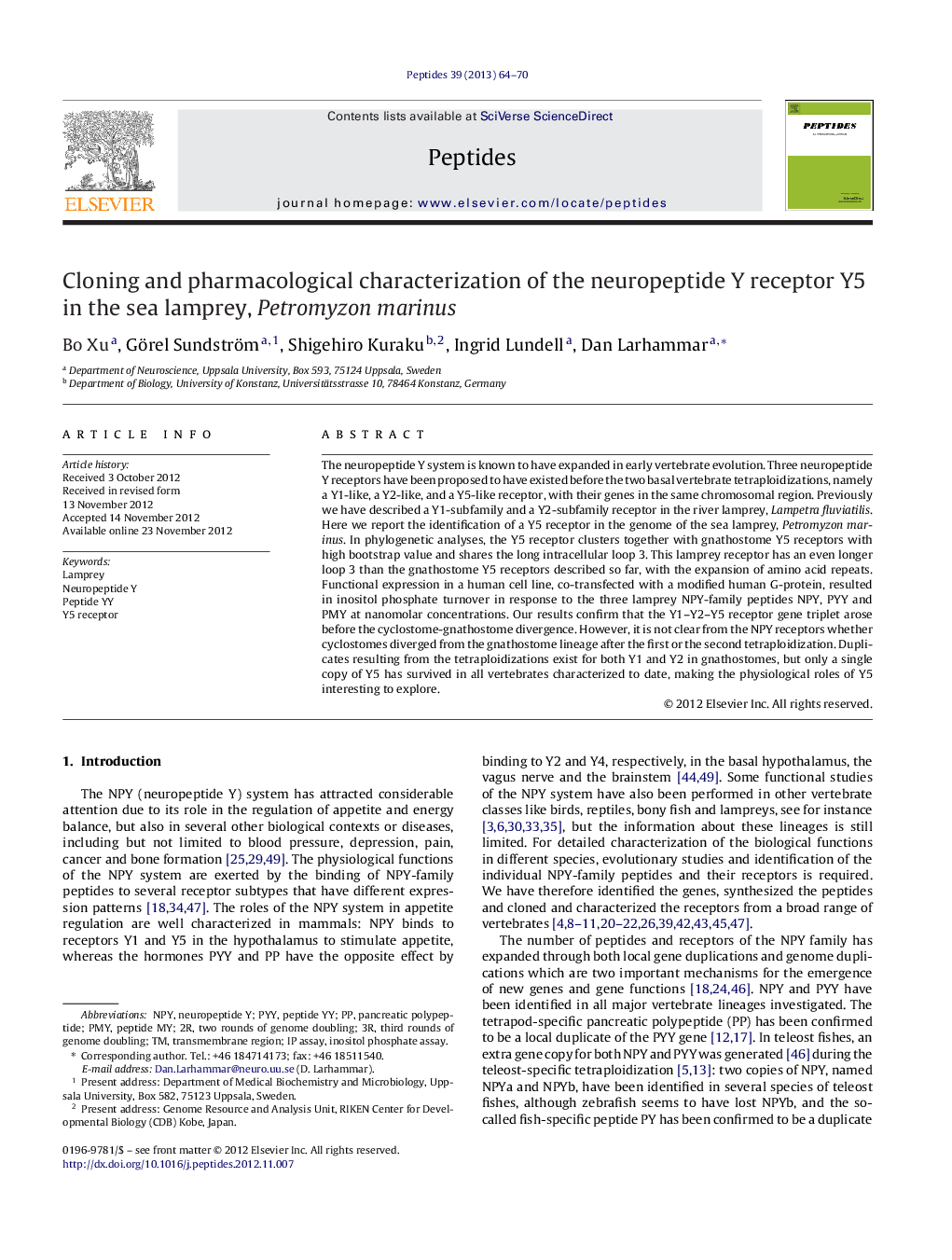| Article ID | Journal | Published Year | Pages | File Type |
|---|---|---|---|---|
| 2006283 | Peptides | 2013 | 7 Pages |
The neuropeptide Y system is known to have expanded in early vertebrate evolution. Three neuropeptide Y receptors have been proposed to have existed before the two basal vertebrate tetraploidizations, namely a Y1-like, a Y2-like, and a Y5-like receptor, with their genes in the same chromosomal region. Previously we have described a Y1-subfamily and a Y2-subfamily receptor in the river lamprey, Lampetra fluviatilis. Here we report the identification of a Y5 receptor in the genome of the sea lamprey, Petromyzon marinus. In phylogenetic analyses, the Y5 receptor clusters together with gnathostome Y5 receptors with high bootstrap value and shares the long intracellular loop 3. This lamprey receptor has an even longer loop 3 than the gnathostome Y5 receptors described so far, with the expansion of amino acid repeats. Functional expression in a human cell line, co-transfected with a modified human G-protein, resulted in inositol phosphate turnover in response to the three lamprey NPY-family peptides NPY, PYY and PMY at nanomolar concentrations. Our results confirm that the Y1–Y2–Y5 receptor gene triplet arose before the cyclostome-gnathostome divergence. However, it is not clear from the NPY receptors whether cyclostomes diverged from the gnathostome lineage after the first or the second tetraploidization. Duplicates resulting from the tetraploidizations exist for both Y1 and Y2 in gnathostomes, but only a single copy of Y5 has survived in all vertebrates characterized to date, making the physiological roles of Y5 interesting to explore.
► NPY family receptor Y5 was identified and cloned from the sea lamprey, Petromyzon marinus. ► Pharmacological studies show that the Y5 is a functional receptor. ► The results confirm that the Y1–Y2–Y5 receptor gene triplet arose before the cyclostome–gnathostome divergence.
